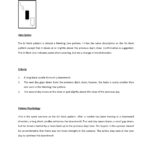The “thrusting” candlestick pattern is a two-candle continuation pattern that typically occurs in a downtrend and indicates that the bearish sentiment is still strong. Here’s a detailed breakdown:
Characteristics of the Thrusting Pattern
- First Candle:
- The first candle is a long bearish (black or red) candle, which confirms the ongoing downtrend.
- Second Candle:
- The second candle is a bullish (white or green) candle.
- The opening price of the second candle is below the closing price of the first candle.
- The closing price of the second candle is within the lower half of the first candle’s body but above its midpoint.
Significance
- Continuation Pattern: Unlike bullish reversal patterns, the thrusting pattern suggests that the downtrend will continue. The upward move of the second candle is not strong enough to suggest a reversal, indicating that sellers still have control.
- Market Sentiment: It reflects a temporary buying interest, but the failure of the second candle to close above the midpoint of the first candle shows that the buying pressure is weak compared to the overall selling pressure.
Example of Thrusting Pattern
- Downtrend: The market is in a downtrend, confirming a bearish sentiment.
- First Candle: A long bearish candle forms, reinforcing the downtrend.
- Second Candle: The next day opens lower, shows some buying interest, but fails to close above the midpoint of the previous bearish candle, indicating weak bullish momentum.
Interpretation
- Bearish Continuation: Traders interpret this pattern as a signal that the downtrend is likely to continue. It’s a sign to hold short positions or to avoid entering long positions.
- Confirmation: Although the thrusting pattern is considered a bearish continuation pattern, it’s often recommended to wait for additional confirmation, such as another bearish candle or a breakdown below the recent low, before taking action.
Visual Representation
Here’s a simplified visual representation:
Day 1 Day 2
Open
| Open
|-----------------|
| | |
| | |
| | |
| | |-----------------|
| | | |
| | | |
|-----------------| |-----------------|
Close
CloseIn this illustration:
- The first candle is a long bearish candle.
- The second candle opens lower than the first candle’s close, moves higher, but closes within the lower half of the first candle’s body.
Understanding the thrusting pattern and its implications can be valuable for traders looking to navigate bearish continuations in a downtrend.
how can I differentiate between a valid Thrusting pattern and a false signal
To differentiate between a valid Thrusting pattern and a false signal, follow these steps:
- Identify the Pattern:
- Ensure the pattern consists of two candles: a long red candle followed by a long green candle.
- Verify that the green candle opens below the previous red candle’s close and closes above its midpoint but below its open[1][2][3].
- Assess Market Context:
- Confirm that the pattern emerges within an established downtrend, which can span several candle periods on higher timeframes or over a month on daily charts[1][2][3].
- Consider the overall market trend and the broader context to avoid false signals[2][3].
- Volume Analysis:
- Check for confirmation from volume analysis. A thrusting pattern with high volume on the green candle can be more reliable than one with low volume[2][3].
- Additional Indicators:
- Use other technical indicators to confirm the signal. For example, if the pattern is accompanied by a bullish trendline or a breakout above a resistance level, it can increase the confidence in the signal[2][3].
- Stop Loss:
- Position a stop-loss above the high of the pattern to mitigate potential losses if the trend unexpectedly reverses[2].
- Entry Point:
- The ideal entry point for short selling is at the close of the confirmation candle[2].
- Risk Management:
- Manage risk by setting stop-losses and using position sizing to limit potential losses[2][3].
- Confirmation:
- Seek additional confirmation from other technical indicators, such as trendlines, support and resistance levels, or other candlestick patterns, to avoid false signals[2][3].
By following these steps, you can increase the reliability of your Thrusting pattern signals and reduce the likelihood of false signals.
Citations:
[1] https://www.litefinance.org/blog/for-beginners/how-to-read-candlestick-chart/thrusting-pattern/
[2] https://www.supermoney.com/encyclopedia/thrusting-line
[3] https://www.investopedia.com/terms/t/thrusting-pattern.asp
[4] https://howtocfdtrade.com/2024/06/05/thrusting-candlestick-pattern/
[5] https://trendystockcharts.com/tsc-members-area/advanced-candlesticks/thrusting/
what additional indicators can confirm a valid Thrusting pattern
To confirm a valid Thrusting pattern, consider the following additional indicators:
- Trendlines: Verify that the pattern emerges within an established downtrend, which can span several candle periods on higher timeframes or over a month on daily charts[1][2][3].
- Support and Resistance Levels: Ensure that the pattern forms near a significant support or resistance level, which can increase the confidence in the signal[2][3].
- Moving Averages: Use moving averages to confirm the trend. For example, a short-term moving average (e.g., 50-period) can be used to identify the trend, while a longer-term moving average (e.g., 200-period) can be used to confirm the trend[2][3].
- Volume Analysis: Check for confirmation from volume analysis. A thrusting pattern with high volume on the green candle can be more reliable than one with low volume[2][3].
- Additional Candlestick Patterns: Combine the Thrusting pattern with other candlestick patterns, such as the Piercing pattern, to increase the reliability of the signal[2][3].
- Confirmation Candles: Wait for a confirmation candle that closes above the high of the pattern or below the low of the pattern to enter a long or short position, respectively[2][3].
- Stop Loss: Position a stop-loss above the high of the pattern to mitigate potential losses if the trend unexpectedly reverses[2].
- Risk Management: Manage risk by setting stop-losses and using position sizing to limit potential losses[2][3].
- Confirmation from Other Indicators: Use other technical indicators, such as the Relative Strength Index (RSI), Bollinger Bands, or the Stochastic Oscillator, to confirm the signal and avoid false signals[2][3].
- Backtesting: Backtest the pattern using historical data to evaluate its potential performance and identify any potential issues[4].
By incorporating these additional indicators, you can increase the reliability of your Thrusting pattern signals and reduce the likelihood of false signals.
Citations:
[1] https://www.litefinance.org/blog/for-beginners/how-to-read-candlestick-chart/thrusting-pattern/
[2] https://www.quantifiedstrategies.com/bearish-thrusting/
[3] https://www.investopedia.com/terms/t/thrusting-pattern.asp
[4] https://www.quantifiedstrategies.com/bullish-thrusting-candlestick-pattern/
[5] https://www.tradingsim.com/blog/thrusting-line
how does market volume influence the reliability of a Thrusting pattern
Market volume plays a crucial role in the reliability of a Thrusting pattern. Here are some key points to consider:
- Volume Confirmation: High trading volume during the formation of the Thrusting pattern can increase its reliability. This indicates strong buying pressure and reinforces the validity of the signal[1][3].
- Volume Analysis: Examine the trading volume around the Thrusting pattern to gauge the strength of the signal. High volume on the green candle can confirm the bullish momentum and increase the confidence in the signal[1][3].
- Volume and Trend: Consider the volume in relation to the trend. If the Thrusting pattern forms during a strong downtrend, high volume on the green candle can suggest that the trend is reversing, making the signal more reliable[1][3].
- Volume and Confirmation: Use volume analysis to confirm the Thrusting pattern. If the pattern is accompanied by high volume, it can provide additional confirmation of the signal and reduce the likelihood of false signals[1][3].
- Volume and Risk Management: Manage risk by setting stop-losses and using position sizing to limit potential losses. High volume on the green candle can indicate strong buying pressure, but it is essential to monitor the price action and adjust the trade accordingly[1][3].
By considering market volume in conjunction with the Thrusting pattern, traders can increase the reliability of their signals and make more informed trading decisions.
Citations:
[1] https://www.litefinance.org/blog/for-beginners/how-to-read-candlestick-chart/thrusting-pattern/
[2] https://www.investopedia.com/terms/t/thrusting-pattern.asp
[3] https://howtocfdtrade.com/2024/06/05/thrusting-candlestick-pattern/
[4] https://www.supermoney.com/encyclopedia/thrusting-line
[5] https://www.quantifiedstrategies.com/bearish-thrusting/
are there specific volume indicators that complement the Thrusting pattern
Yes, there are specific volume indicators that complement the Thrusting pattern. Here are some key points to consider:
- Volume Confirmation: High trading volume during the formation of the Thrusting pattern can increase its reliability. This indicates strong buying pressure and reinforces the validity of the signal[1][3].
- Volume Analysis: Examine the trading volume around the Thrusting pattern. If the bullish Thrusting pattern is accompanied by high trading volume, it can suggest strong buying pressure and reinforce the validity of the signal[1][3].
- Breakout Volume: Look for the breakout to occur on higher volume, as breakouts that occur on higher volume are considered stronger than those that form on lower volume[3].
- Volume and Trend: Consider the volume in relation to the trend. If the Thrusting pattern forms during a strong downtrend, high volume on the green candle can suggest that the trend is reversing, making the signal more reliable[1][3].
- Volume and Confirmation: Use volume analysis to confirm the Thrusting pattern. If the pattern is accompanied by high volume, it can provide additional confirmation of the signal and reduce the likelihood of false signals[1][3].
By incorporating these volume indicators into your analysis, you can increase the reliability of your Thrusting pattern signals and make more informed trading decisions.
Citations:
[1] https://howtocfdtrade.com/2024/06/05/thrusting-candlestick-pattern/
[2] https://www.litefinance.org/blog/for-beginners/how-to-read-candlestick-chart/thrusting-pattern/
[3] https://www.investopedia.com/terms/t/thrusting-pattern.asp
[4] https://www.supermoney.com/encyclopedia/thrusting-line
[5] https://fastercapital.com/topics/harnessing-the-power-of-breadth-thrust-indicator-and-volume-analysis-for-profitable-trading.html


